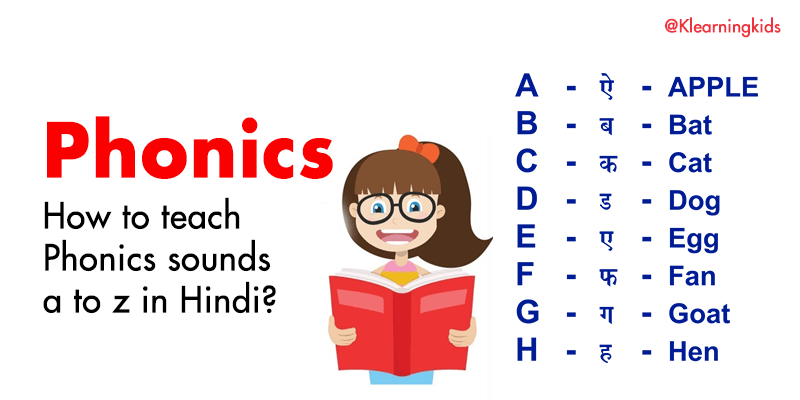Phonics is a method of teaching reading and spelling that focuses on the relationships between letters and sounds. In Hindi, as in many other languages, there are a number of phonics sounds that are important for children to learn.
Why phonics is important for a child?
Phonics is an important part of reading instruction because it helps children learn the relationships between the letters of written language and the sounds of spoken language. By understanding phonics, children can decode unfamiliar words, which helps them to read more fluently and with greater comprehension. Phonics also helps children learn to spell, as they are able to use their knowledge of letter-sound relationships to spell words. In addition, phonics instruction can improve children’s vocabulary skills, as they learn to use letter-sound knowledge to identify and define new words. Overall, phonics is a crucial skill for children to develop as it lays the foundation for reading and writing success.

How parents can teach Phonics using Hindi?
Here is a list of the phonics sounds from “a” to “z” in Hindi:
अ (a) – This is the first phonics sound that is typically taught in Hindi. It is pronounced like the “a” in “cat.”
आ (aa) – This sound is pronounced like the “a” in “father.”
इ (i) – This sound is pronounced like the “i” in “bit.”
ई (ee) – This sound is pronounced like the “ee” in “beet.”
उ (u) – This sound is pronounced like the “u” in “put.”
ऊ (oo) – This sound is pronounced like the “oo” in “book.”
ए (e) – This sound is pronounced like the “e” in “pet.”
ऐ (ai) – This sound is pronounced like the “i” in “mine.”
ओ (o) – This sound is pronounced like the “o” in “hot.”
औ (au) – This sound is pronounced like the “ou” in “soup.”
क (ka) – This sound is pronounced like the “k” in “kite.”
ख (kha) – This sound is pronounced like the “kh” in “loch.”
ग (ga) – This sound is pronounced like the “g” in “go.”
घ (gha) – This sound is pronounced like the “gh” in “rough.”
ङ (nga) – This sound is pronounced like the “ng” in “sing.”
च (cha) – This sound is pronounced like the “ch” in “chat.”
छ (chha) – This sound is pronounced like the “chh” in “chalk.”
ज (ja) – This sound is pronounced like the “j” in “jam.”
झ (jha) – This sound is pronounced like the “jh” in “journal.”
ञ (nya) – This sound is pronounced like the “ny” in “canyon.”
ट (ta) – This sound is pronounced like the “t” in “toy.”
ठ (tha) – This sound is pronounced like the “th” in “thin.”
ड (da) – This sound is pronounced like the “d” in “dog.”
ढ (dha) – This sound is pronounced like the “dh” in “the.”
ण (na) – This sound is pronounced like the “n” in “not.”
त (ta) – This sound is pronounced like the “t” in “top.”
थ (tha) – This sound is pronounced like the “th” in “this.”
द (da) – This sound is pronounced like the “d” in “dot.”
ध (dha) – This sound is pronounced like the “dh” in “that.”
न (na) – This sound is pronounced like the “n” in “net.”
प (pa) – This sound is pronounced like the “p” in “pat.”
फ (pha) – This sound is pronounced like the “ph” in “phone.”
ब (ba) – This sound is pronounced like the “b” in “bat.”
भ (bha) – This sound is pronounced like the “bh” in “behavior.”
म (ma) – This sound is pronounced like the “m” in “man.”
य (ya) – This sound is pronounced like the “y” in “yard.”
र (ra) – This sound is pronounced like the “r” in “red.”
ल (la) – This sound is pronounced like the “l” in “lot.”
व (va) – This sound is pronounced like the “v” in “vet.”
It’s important for children to learn these phonics sounds, as they form the building blocks for reading and spelling in Hindi. Children can learn these sounds through a variety of activities, such as listening to stories, reading books, and practicing writing words.
How parents teach kids reading with phonics sound in english using hindi?
Download phonics printable take a print & past it in front of kids study table.
